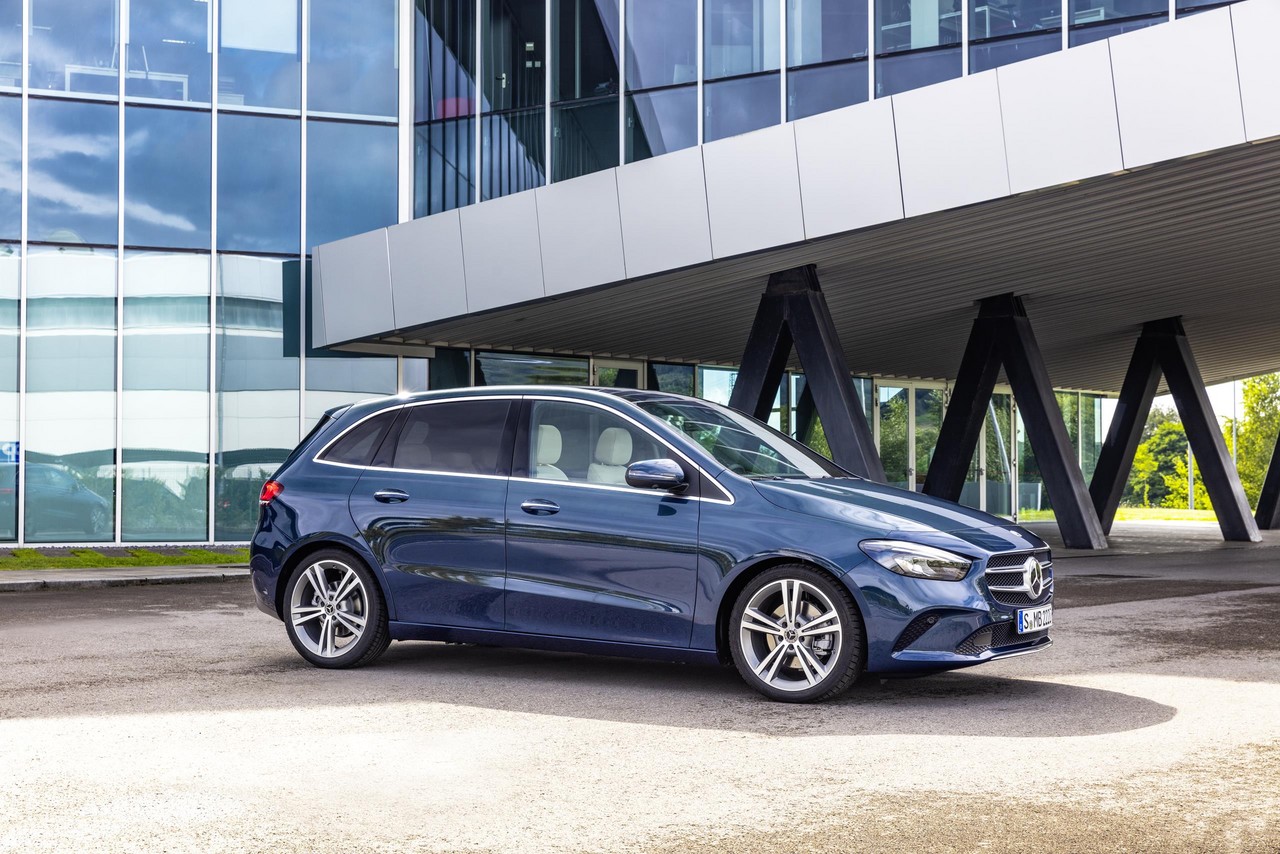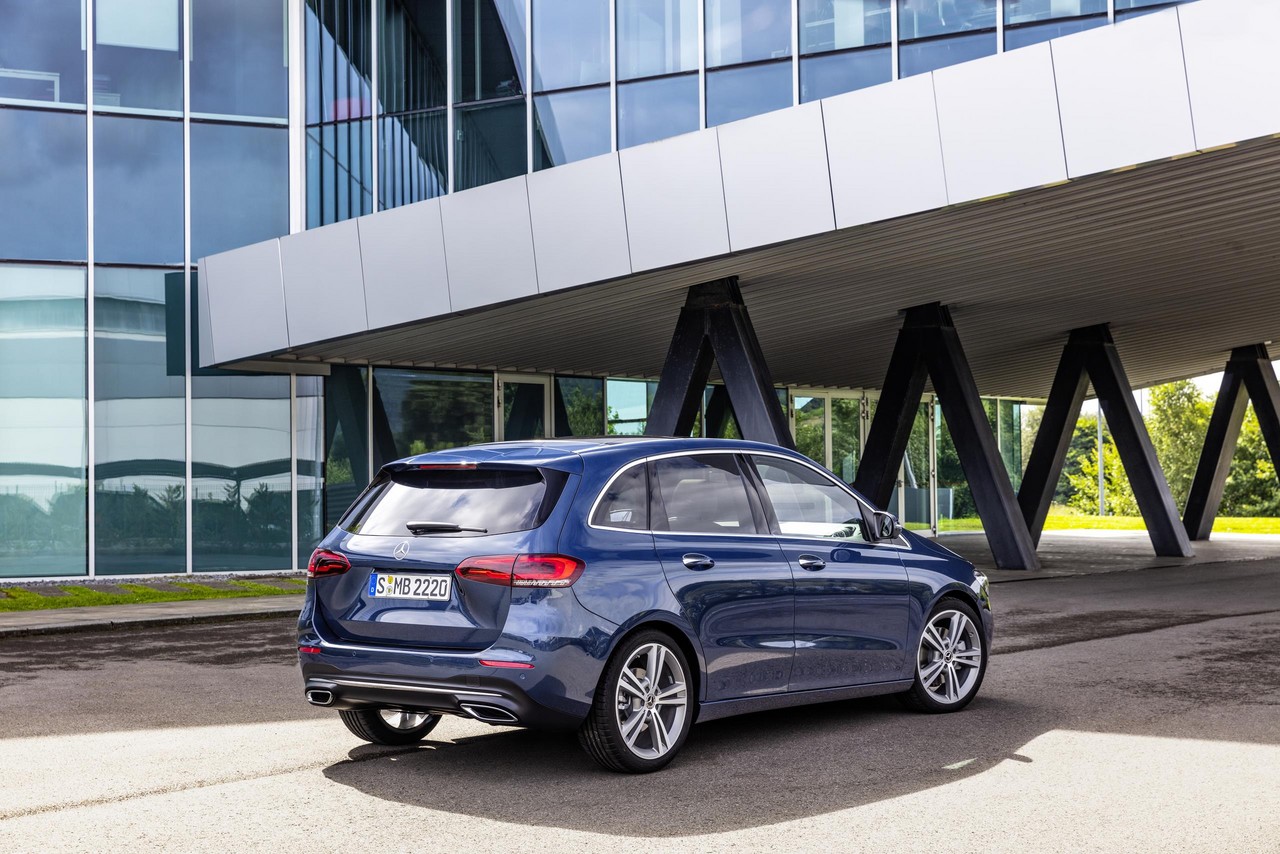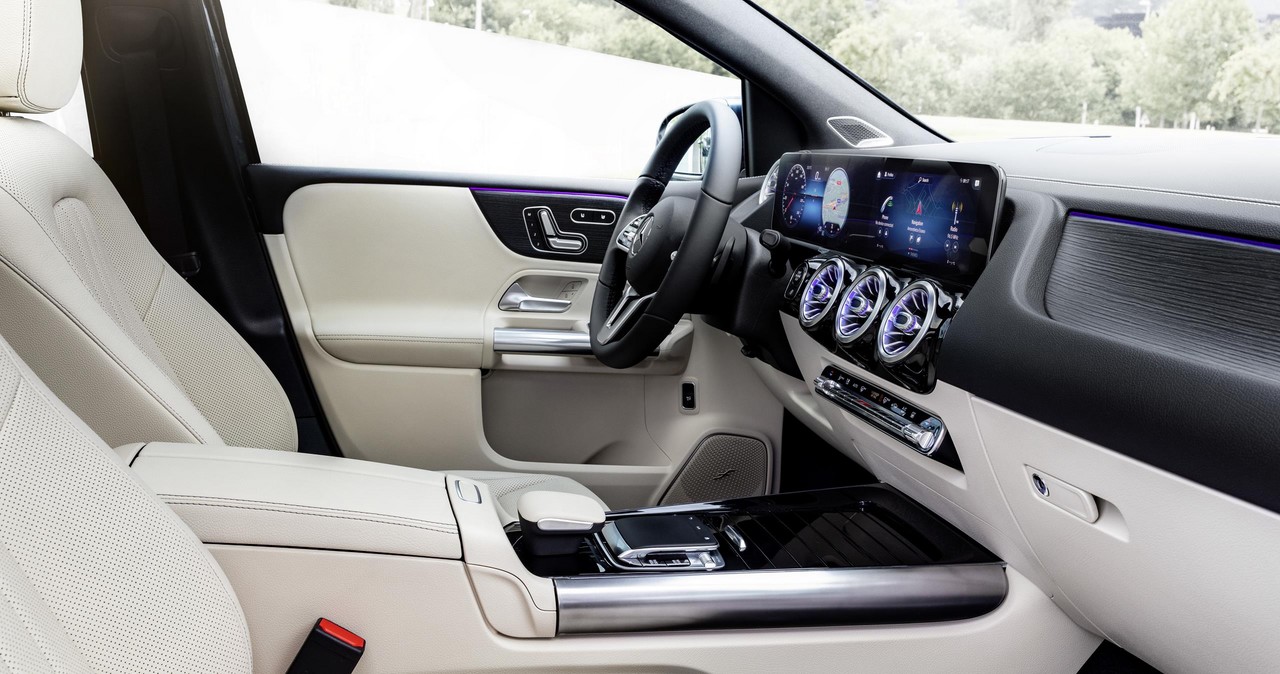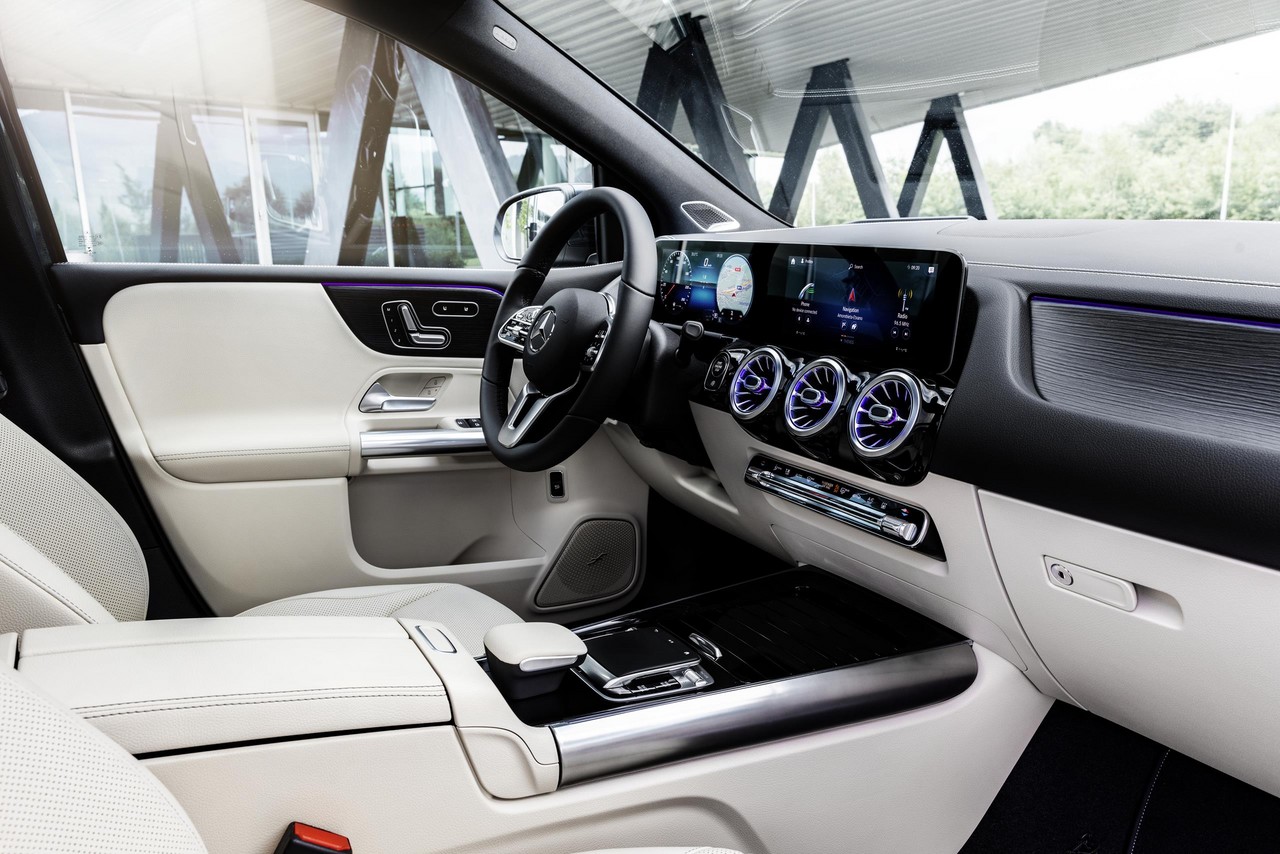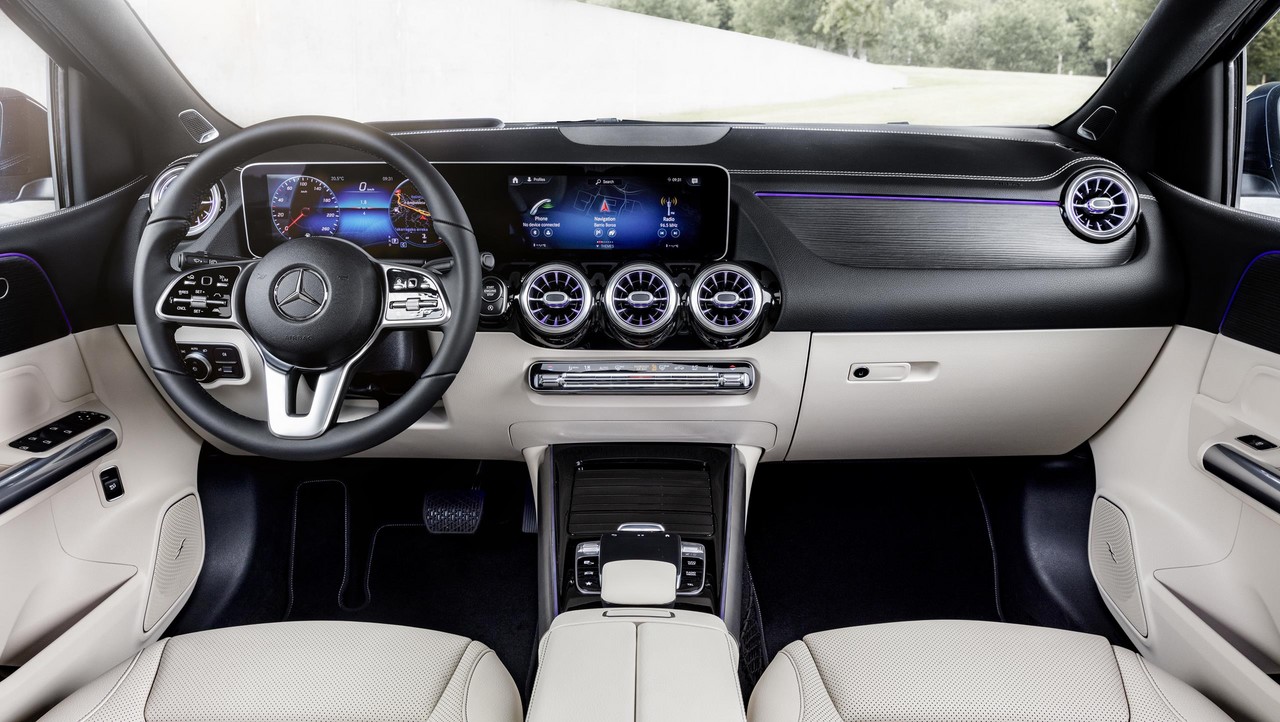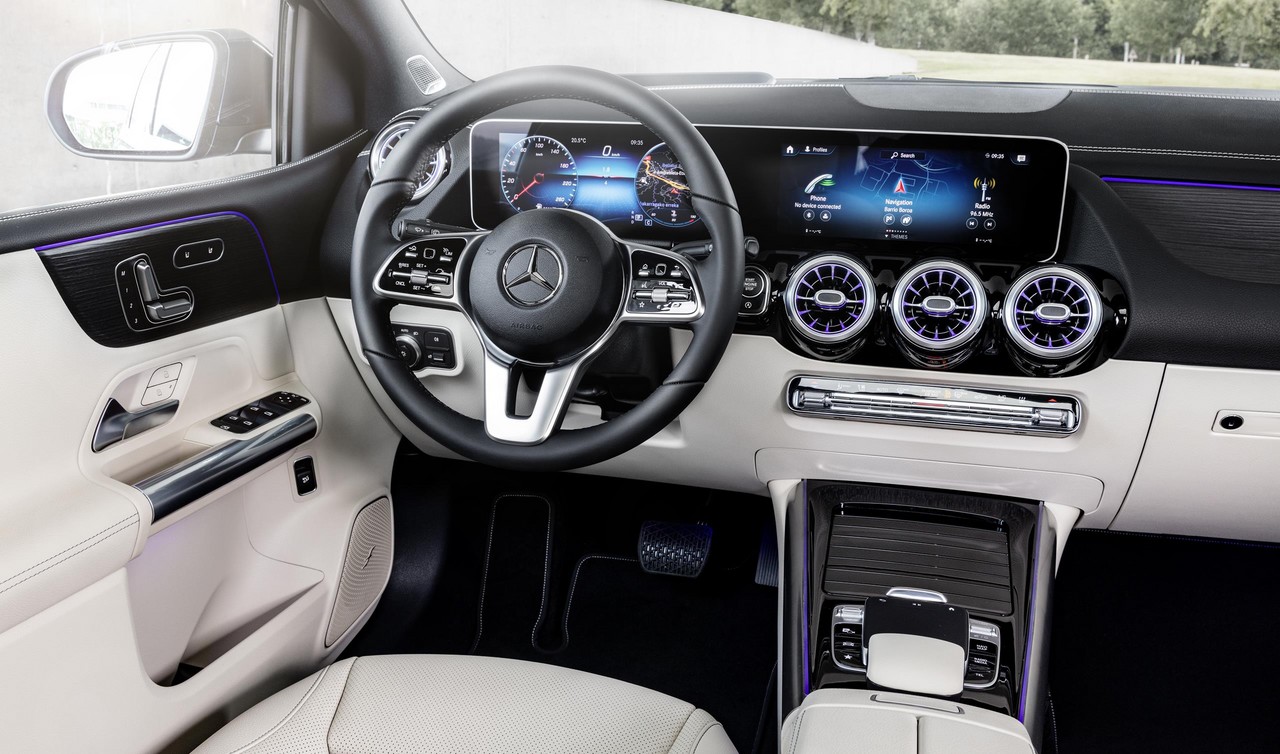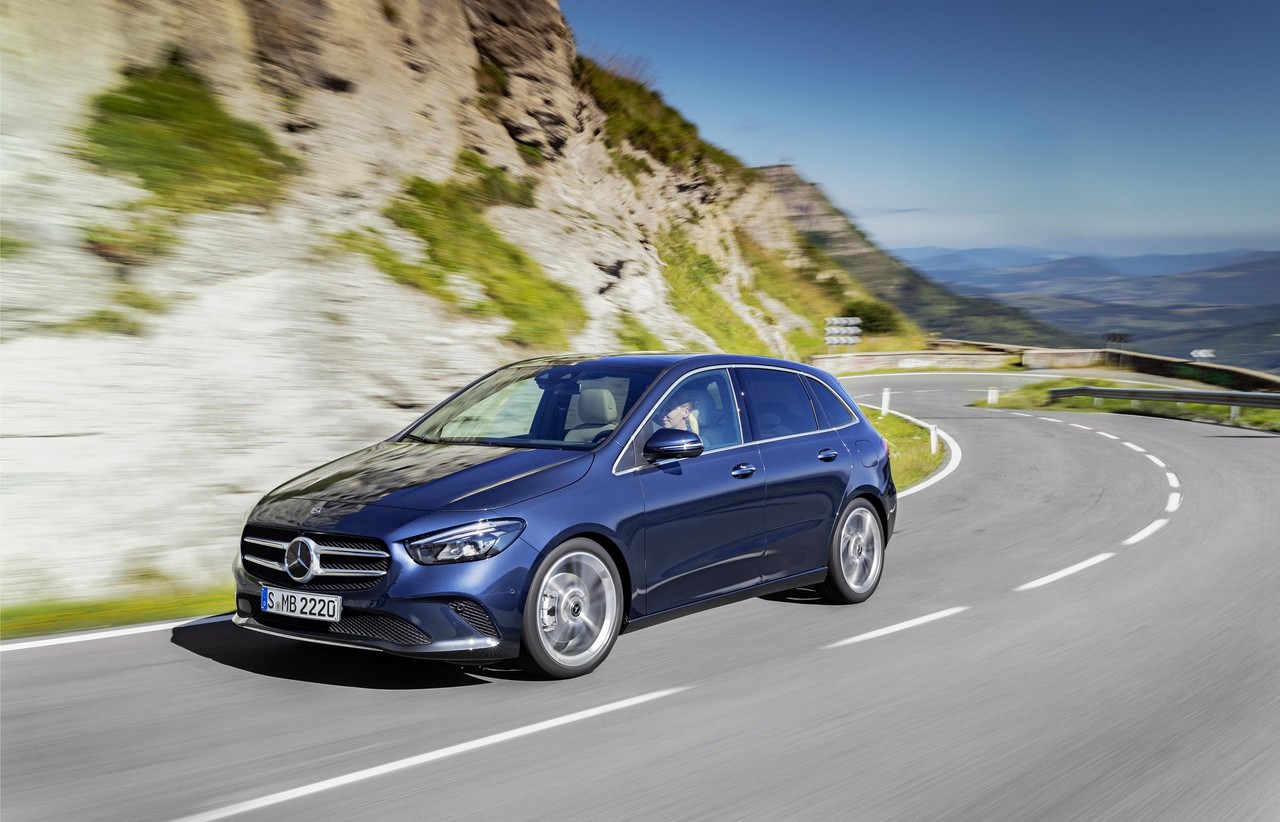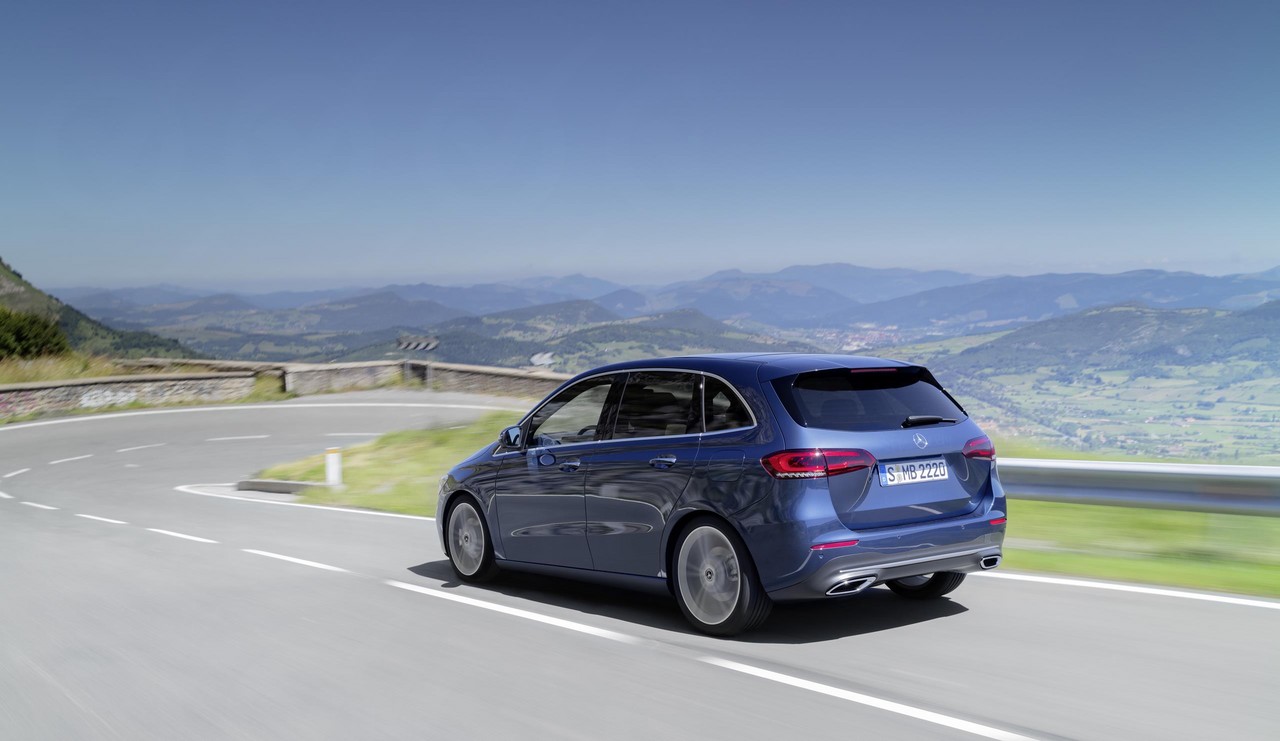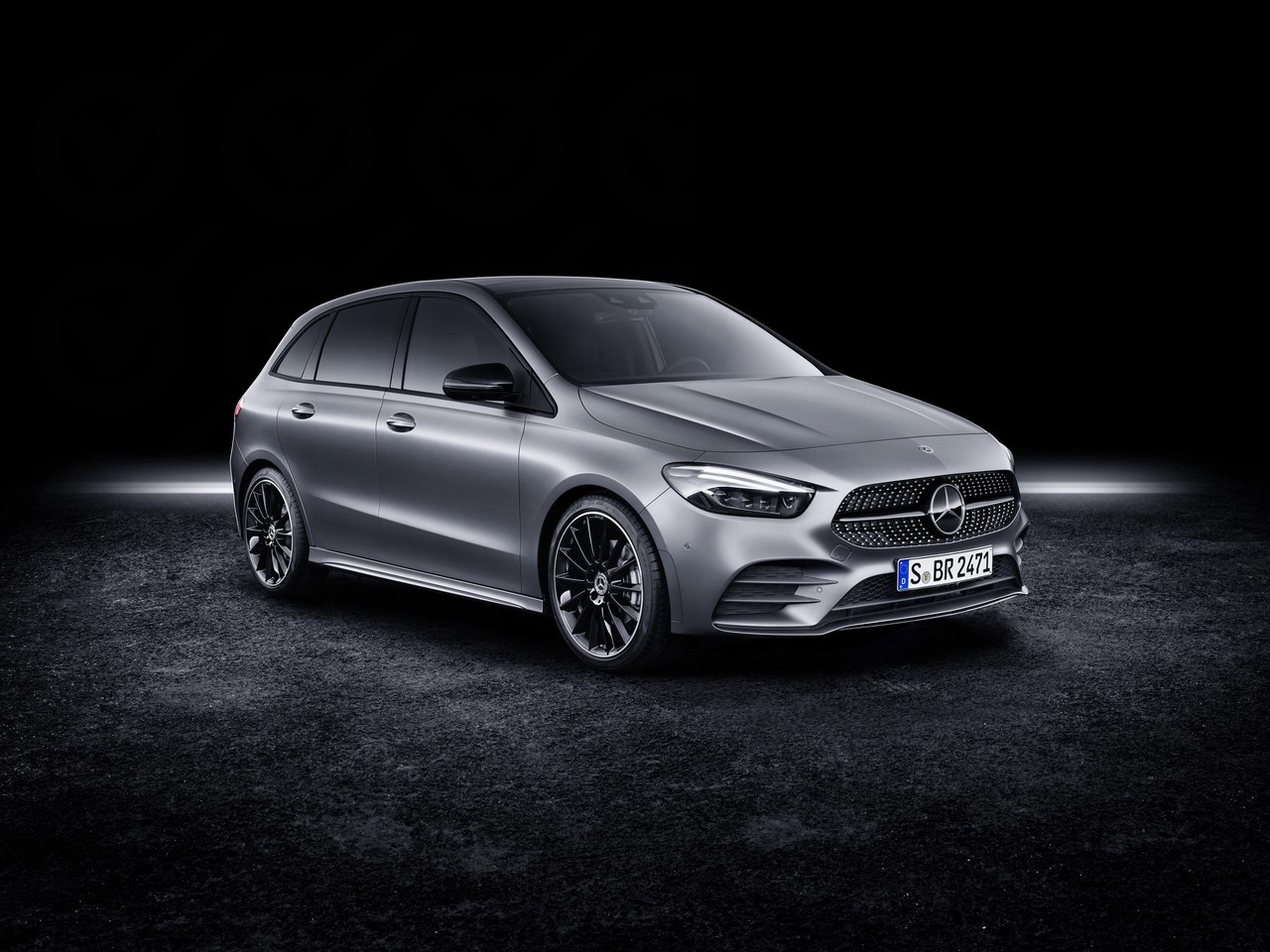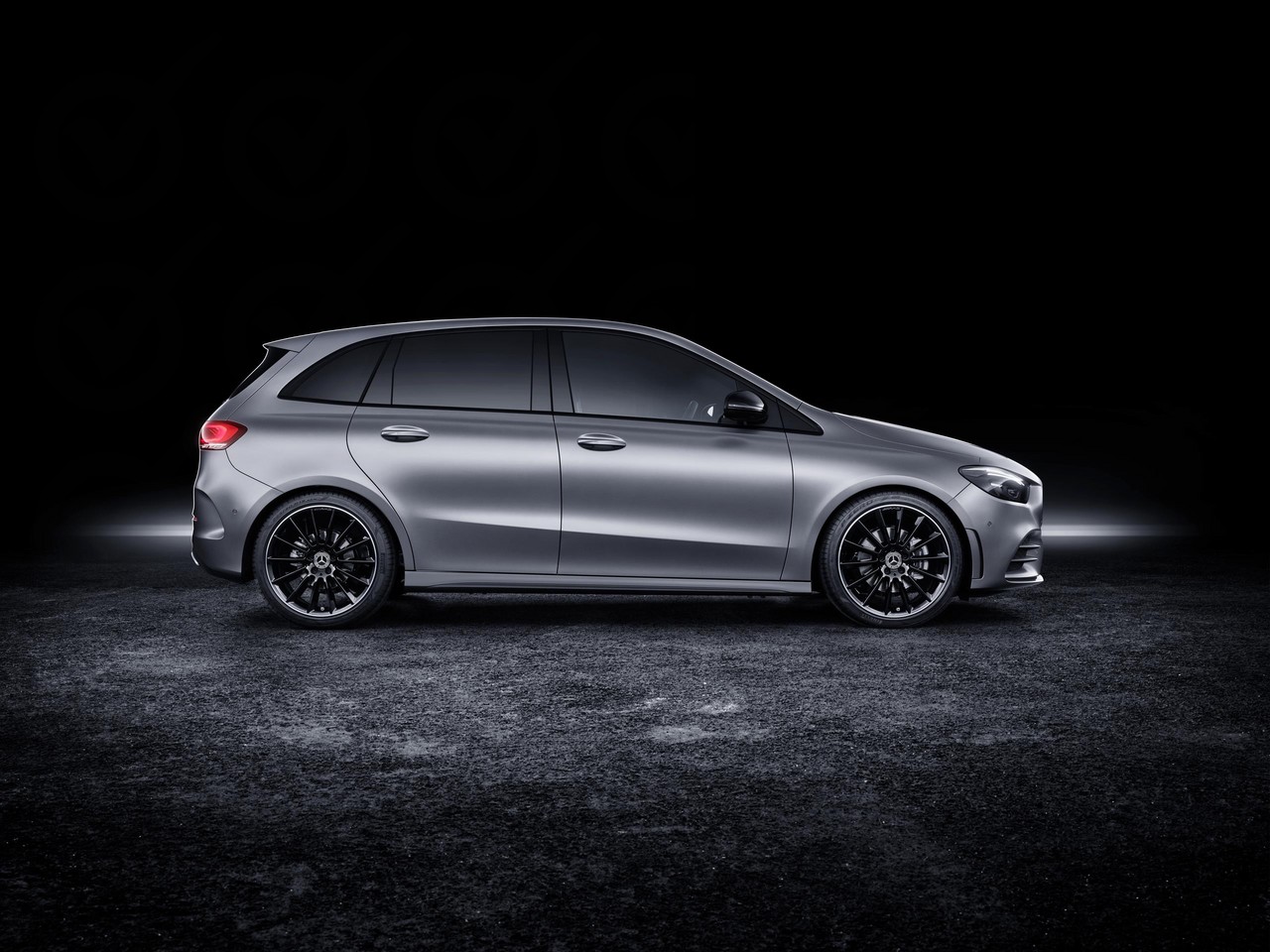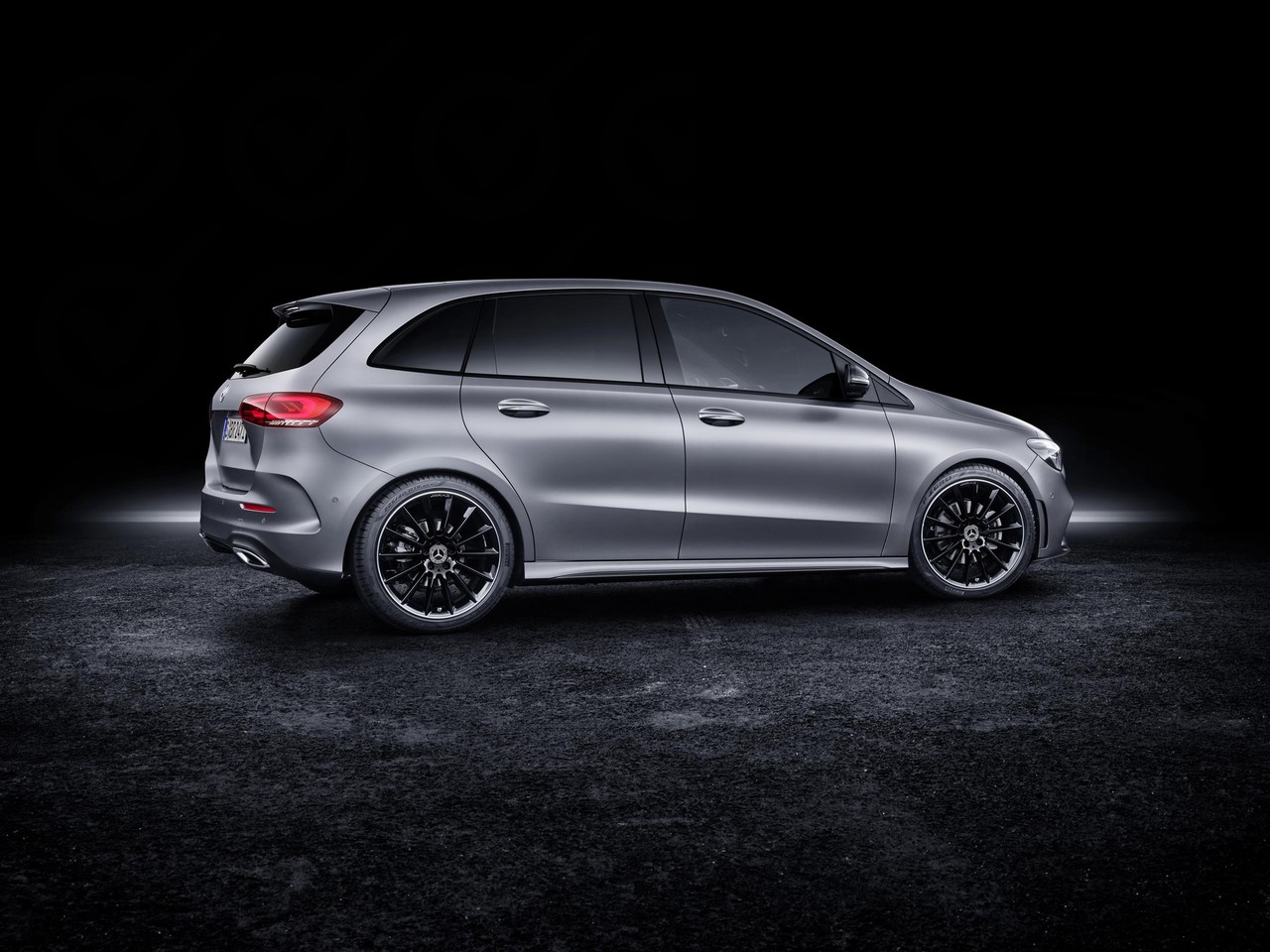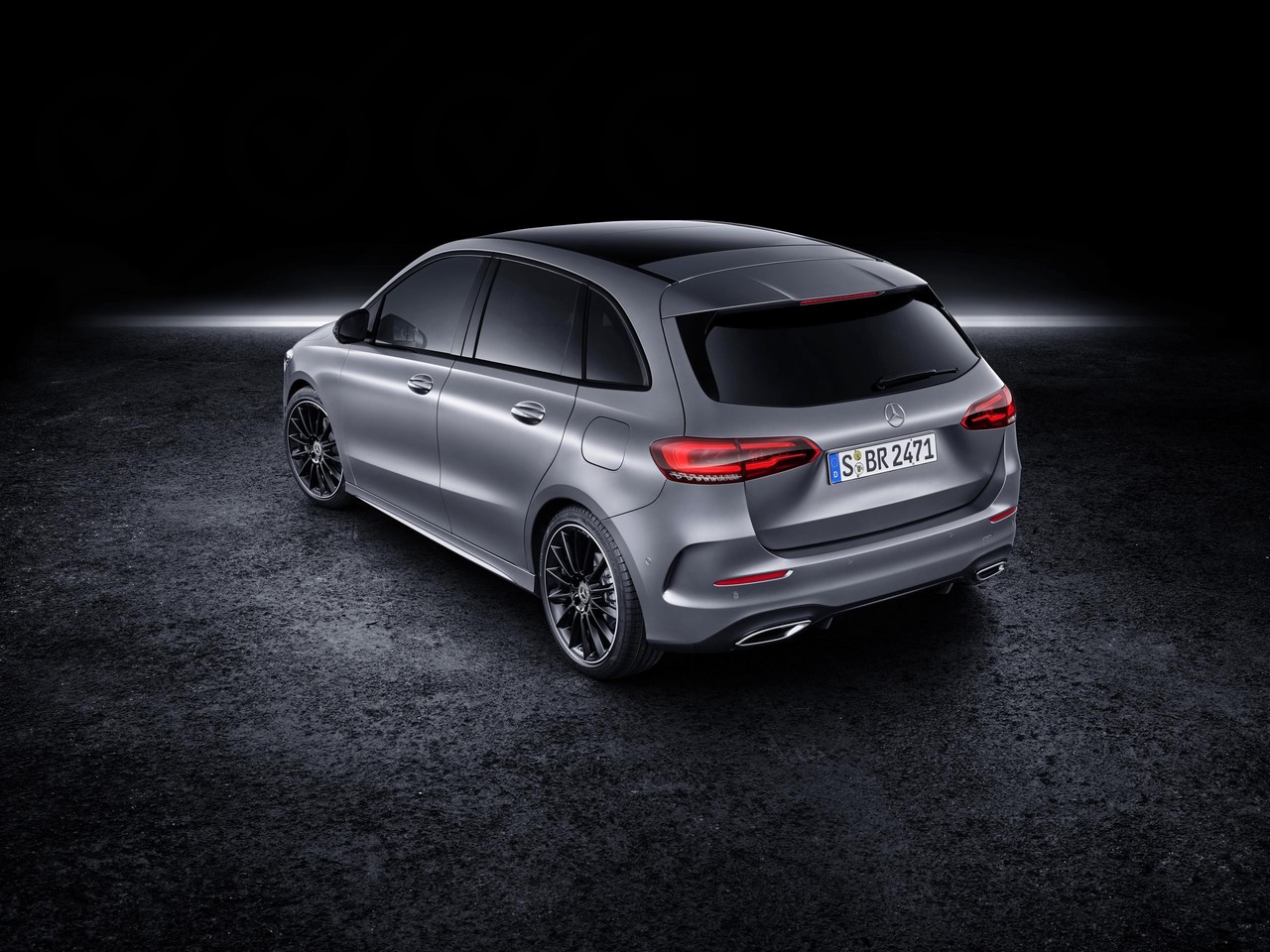
- Spacious interior has a high standard of fit and finish
- Modern MBUX infotainment system
- Comfortable ride
- Active safety technologies fitted as standard
- Steering is accurate…
- … but light and lacking feel
- 1.3-litre turbo petrol engine is too small. And noisy beyond 4000 rpm
- Seven-speed double clutch transmission can be hesitant on take-off
- Modest throttle inputs cause the DCT to kick down two or three gears
Overview
Released in Australia in May 2019, the Mercedes-Benz W247 B-Class was a compact people mover. The front-wheel drive Mercedes-Benz W247 B-Class range was limited to the B180 model which was powered by a 1.3-litre turbocharged petrol engine that was mated to a seven-speed double clutch transmission. To reduce fuel consumption, the 1.3-litre turbocharged engine had a start/stop function so that it could shut down while the vehicle was stationary in traffic. Over the combined ADR 81/02 test cycle, fuel consumption for the Mercedes-Benz W247 B 180 was 5.7 litres per 100 km.
Production of the Mercedes-Benz W247 B-Class commenced in December 2018 in Rastatt, Germany. Upon its release in Australia, the Mercedes-Benz B 180 had a recommended retail price of $46,400 (excluded on-road costs).
| Engine | Trans. | Peak power | Peak torque | |
|---|---|---|---|---|
| B 180 | 1332 cc M282 turbo petrol I4 | 7sp DCT | 100 kW at 5500 rpm | 200 Nm at 1460-4000 rpm |
Body and dimensions
The Mercedes-Benz W247 B-Class shared its MFA2 (Modular Front Architecture) platform with the W177 A-Class but, relative to that model, the driver’s seat was positioned 90 mm higher for the W247 B-Class.
Compared to the Mercedes-Benz W246 B-Class which it replaced, the W247 B-Class was 43 mm shorter (at 4423 mm), 10 mm wider (1796 mm), 8 mm lower (1550 mm) and had a 30 mm longer wheelbase (2699 mm); its drag co-efficient was 0.24 Cd. Furthermore, the W247 B 180 had an unladen weight of 1480 kg and a luggage capacity of 455 litres.
Suspension and steering
The Mercedes W247 B-Class had MacPherson strut front suspension with forged-aluminium wishbones that were attached to cast-aluminium steering knuckles. While more powerful versions of the W247 B-Class had four-link rear suspension (three wishbones and one trailing arm), the W247 B 180 had a torsion bar rear axle (or ‘compound crank rear axle’) with single-tube shock absorbers and separate coil springs.
The Mercedes-Benz W247 B-Class had rack-and-pinion steering with electric power assistance.
Safety equipment
Standard safety equipment for the Mercedes-Benz W247 B 180 included dual front airbags, a driver’s knee airbag, seat-mounted side airbags (front and rear), full-length curtain airbags (i.e. for front and rear occupants), ABS, electronic brake force distribution, brake assist, electronic stability control, traction control and front seatbelts with pre-tensioners and load limiters.
The Mercedes-Benz W247 B-Class was equipped with camera and radar systems that could perceive up to 500 metres ahead of the vehicle. Fitted as standard, Active Brake Assist with cross-traffic function could mitigate the consequences of collisions with vehicles or pedestrians in front of the vehicle. If a collision risk was detected, the system initially issued a visual warning. If there was a serious risk of collision, the driver received an additional, audible warning and the required brake pressure to prevent a collision was calculated (if possible) so that it could be applied when the driver depressed the brake pedal. If the driver failed to respond, however, Active Brake Assist initiated autonomous emergency braking to mitigate or prevent the collision.
For Australia, the Mercedes-Benz W247 B 180 was fitted with the following active safety technologies as standard:
- Blind spot assist (passive): used two radar sensors in the rear of the vehicle to warn the driver before an indicated lane-change if a vehicle was in the driver’s blind spot;
Exit Warning Assist: could issue a visual warning in the door mirror when the vehicle was stationary and up to three minutes after the ignition had been turned off to warn of an approaching vehicle or bicycle (providing it was exceeding 2 m/s). If the driver used the door handle at this moment, an additional acoustic warning would be issued; - Active Lane Keeping Assist: operating at speeds from 60 km/h to 200 km/h, Active Lane Keeping Assist warned the driver if the vehicle was unintentionally drifting out of its lane via pulsed vibrations through the steering wheel. If the vehicle crossed a continuous line, the system could pull the vehicle back into its lane by applying the brakes on one side of the vehicle. In the case of a broken line, such intervention would occur only when there was a collision risk with a vehicle in the adjacent lane (including oncoming traffic);
- Crosswind Assist: could detect sudden, strong gusts of wind and prevent the vehicle from drifting out of its lane via corrective braking forces on one side of the vehicle;
- Pre-Safe Sound: would emit a brief rushing sound when a collision was imminent to trigger the stapedius muscle in the ear and reduce the risk of hearing damage;
- Attention Assist: monitored driver behaviour for signs of fatigue and, if detected, issued visual and audible warnings;
- Traffic Sign Assist: used navigation data and image recognition to display – in the instrument cluster – the maximum permitted speed, restrictions on overtaking and pedestrian warnings near ‘zebra’ crossings. Traffic Sign Assist also had an extended wrong-way warning, while the detection of stop signs was been combined with the ECO start/stop function so that the engine would remain on. Active Speed Limit Assist was a sub-function of Traffic Sign Assist that used the forward-facing camera to recognise sign gantries and road works signs to set the vehicle’s maximum speed; and,
- Pre-Safe Plus: used the rear radar sensors to detect if a rear-end collision was imminent and, if so, flashed the rear hazard lights and prepared occupant protection measures such as the seatbelt tensioners. If the vehicle was stationary and the risk of a collision persisted, the system could apply the vehicle’s brakes to reduce the risk of injuries by reducing the forward jolt caused by an impact from the rear.
The W247 B-Class had an ‘active bonnet’ which, in the event of a pedestrian collision, deployed pyrotechnical actuators to raise the height of the bonnet by around 80 mm to create additional clearance between the bonnet and components in the engine bay to reduce the risk of pedestrian injury.
Wheels, tyres and brakes
The Mercedes-Benz W247 B 180 had 6.5J x 17-inch alloy wheels with 205/55 R17 run-flat tyres. Furthermore, the W247 B 180 had 295 mm by 24 mm ventilated front brake discs and 276 mm by 11 mm solid rear discs.
Features: Mercedes-Benz W247 B 180
Inside, the W247 B-Class featured the ‘Mercedes-Benz User Experience’ (MBUX) multimedia system which could be operated by touchscreen, buttons on the steering wheel and a touchpad on the centre console and voice control with natural language comprehension (‘Linguatronic’). For Australian-delivered vehicles, the W247 B-Class had two 10.25-inch displays: one for the instrument cluster and one for the media touchscreen.
The infotainment system for the Mercedes-Benz W247 B-Class included a 225 watt audio system with nine speakers, digital radio tuner (DAB+), NTG6 MB navigation, smartphone integration (Apple CarPlay and Android Auto), Bluetooth mobile phone connectivity and a USB-C connection.
Standard features for the Mercedes-Benz W247 B 180 consisted of ‘Artico’ synthetic leather upholstery, climate control air conditioning (‘Thermatic’), cruise control, LED headlamps with integrated daytime running lights, a rear fog lamp, dusk-sensing headlights, rain-sensing wipers, a reversing camera with dynamic guidelines, front and rear parking sensors, 40:20:40 split and folding rear seats with through-loading, steering wheel gearshift paddles, remote central locking with proximity key (i.e. keyless entry), power adjustable and heated door mirrors with folding function, power mirrors, a tilt and reach adjustable steering column, push-button start, a power-operated park brake, an auto-dimming rear-view mirror, interior lighting, illuminated vanity mirrors, velour floor mats, a 12 volt power socket (load area), tinted windows, a trip computer and an immobiliser
The Mercedes-Benz B 180 was also equipped with ‘Active Parking Assist’ which could identify suitable parallel parking spaces – when traveling at speeds of up to 35 km/h – and steer the vehicle into the parking space while the driver controlled vehicle speed.
Related links
